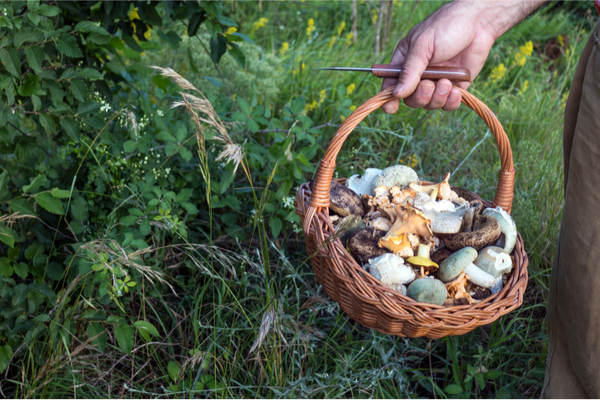Get ready to go mushroom crazy on the Day of the Mushroom! From savory dishes to unique crafts, there’s endless ways to enjoy these delicious fungi. Mushrooms come in a variety of shapes, sizes, and flavors. They can add a earthy, savory taste to dishes like pastas, pizzas, and soups. Plus, they are versatile enough to be used as the main ingredient or simply as a topping. From button to shiitake to portobello, there is no shortage of variety when it comes to these fungi. So let’s take a moment to appreciate all that this humble yet powerful ingredient has to offer – both in taste and in health benefits.
Mushrooms Through the Ages
Mushroom cultivation is believed to have started in France during the 1650s when gardeners discovered they could grow them in composted horse manure. Then the cultivation of mushrooms spread across Europe during the 1700s with the farmers growing them in cellars and caves.
In the United States, Mushroom farming was first introduced in 1871 in Pennsylvania, where it quickly gained popularity, but the first log cultivation of Shiitake mushrooms was innovated by Japanese farmers, a method that remains popular today for organic production.
However, it was really during the 1980s, with the rise of gourmet cooking, that the popularity and availability of various exotic mushroom types increased.
Health Benefits of Mushrooms
Not only do mushrooms taste great, they also have numerous health benefits. They are low in calories and fat, high in protein and fiber, and packed with important vitamins and minerals. Adding mushrooms to your diet can improve cardiovascular health, boost immunity, and regulate blood sugar levels.
Scientifically, mushrooms fall into the fungi kingdom, which interestingly shares more DNA with animals than with plants. This genetic similarity may explain why many find mushrooms nutritionally beneficial. In fact, mushrooms have so many healthy attributes, they been used for their medicinal properties for thousands of years!
Mushrooms are Healthy for the Planet, Too
Did you know that cultivating mushrooms is good for the environment? Mushrooms require less water and energy to grow than other crops, making them a more sustainable food choice. They also have the ability to act as natural pesticides, reducing the need for harmful chemicals. By choosing mushrooms, you are making a positive impact on the environment and supporting sustainable farming practices.
Mushrooms have also been found living in some of the world’s harshest environments, including deserts and areas exposed to radiation. This goes to show their adaptability and resilience. Some mushrooms have the remarkable ability to break down pollutants and chemicals, making them useful in bio-remediation efforts to clean polluted areas.
Mushroom Fun Facts
In Oregon’s Blue Mountains, there exists a honey fungus that spans about 2.4 miles, making it the largest living organism on Earth. For comparison, that’s equivalent to 4,166 feet or 36 New York City blocks!
Certain types of mushrooms are bioluminescent and can produce light in the dark. The phenomenon is known as ‘foxfire’ and has been used as a natural light source for centuries.
So today, go out and share your love for that cute little fungi, the mushroom. You can even share which variety is your favorite on the Mushroom Council’s Website! #DayoftheMushroom.
—
Photo Credit: Mrak.hr / Shutterstock.com
